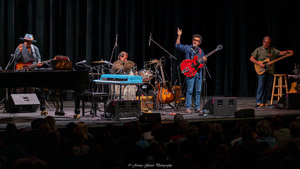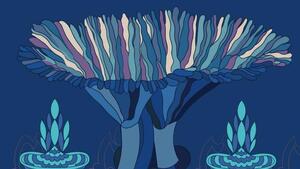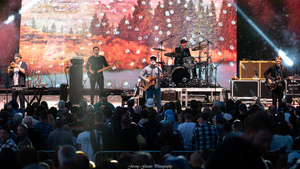
Miryam Charles
by Generoso and Lily Fierro
There are many aspects of this year’s AFI Fest lineup that warrant special distinction. In the eight years that we have covered the event, the programming team has consistently expanded on their commitment to discovering and showcasing emerging talents, with this year’s selections going far beyond previous iterations in terms of their international outreach. AFI Fest 2022 also curated an astonishing amount of documentary features that applied experimental methods in order to distinctly tell their narratives while simultaneously expanding the genre.
Amongst our favorite features this year at AFI Fest were a trio of innovative documentaries that used a plethora of unorthodox techniques to delve into their subjects and topics: Alain Gomis’s Rewind and Play, Véréna Paravel and Lucien Castaing-Taylor’s De Humani Corporis Fabrica, and Miryam Charles’s Cette Maison.
Throughout her early career, Miryam Charles, a Canadian-born filmmaker of Haitian descent, has explored a myriad of issues related to trauma and displacement in her short film work, and now, with her compelling debut hybrid-documentary feature, Cette Maison, Charles examines how the tragic death of her cousin Terra, who died in 2008 under mysterious, violent circumstances at the age of fourteen while living in Bridgeport, Connecticut, impacted her and her extended family. Charles’s film is not concerned with any investigation into the causality of Terra’s death and instead opts for an approach that imagines Terra living in an adult state, which plays out in Cette Maison through a formal staging with actors assuming the roles of Terra and her family. These dramaturgic moments are combined with traditional documentary-like footage and over narration that freeze and shift time to add focus and distance to mirror the emotions behind Terra’s death and the Charles family’s concept of home.
We spoke at length with Charles at AFI Fest on the morning of the screening of Cette Maison and discussed how her short films equipped her to tell such a personal story, her philosophy regarding the use of fictive and documentary elements, her approach to recording the film’s over narration, and how Charles’s family’s immigration to Canada from Haiti affected her life and the construction of her film.
• •
LF: Throughout your short film work, you’ve explored trauma in multiple situations. Given that your cousin’s death occurred when you were a young woman, how important was it for you to explore these outside traumas in your previous works before confronting the loss of your cousin more directly in Cette Maison?
MC: I think that I was actually preparing myself in a way, not consciously, to work on Cette Maison, because, as you said, all of my earlier films do address trauma, and so I think I was creating these films to work up the courage to take on this project and confront the death of my cousin. For years, my family and I were in a bit of denial about what happened, so we tried not to talk about it. But young women were normally at the center of my short films, and they were always trying to overcome trauma and get answers and find the truth, so in creating these works, I was eventually better prepared to make Cette Maison.
GF: Your short films are also highly experimental in nature and consistently blend documentary-like footage with fictional elements. In Cette Maison, you distinctively heighten fictional and nonfictional parts with the black-box theater staging of certain scenes and dialogs. How did you decide which moments would be shot and presented in this staged form?
MC: From the beginning, when I was writing the script, I knew that a scene like the one at the morgue was such a strange and traumatic moment in real life that I decided that I was going to leave that space almost blank and add elements of set design to accentuate the sense of loss we all felt at that time. Also, since I went into this knowing that I wasn’t going to make a traditional documentary, I met with family members to talk about my cousin, her life, and certain memories. When I went to Connecticut to do interviews, I wanted to also film some scenes using my cousin’s mother’s real-life, beautiful garden, but I realized it would be too emotionally difficult, so as a means to protect myself, I made the decision to recreate that garden in the studio to retain that connection to flowers and plants as an homage to my family because they are very much in tune with nature.
LF: Could you talk about your approach and methods for recording and processing the narration? The volume, the cadence, the distance, and the slight distortion add so much additional depth to the images of the film.
MC: I wrote the script, and then I spent a few weeks with the two actresses who narrated the film. We took that time to discuss the text, to which they added elements of themselves, and then we went into the studio together, drank tea, and talked about life in a very calm, loving, and relaxing way. Thanks to this process, the actresses understood from the very beginning that this was a very emotional story, and it all went well. I then did the recording with the two actresses together. The producers had asked me if I wanted to record them separately, but given that we were doing the three voices of the film, I very much wanted to record our voices together.
GF: Some of the most beautiful images of Cette Maison come from your exploration of what returning to Haiti would look like for your cousin had she lived. What was it like to go back to Haiti to try to capture the sense of place through the imagined perspective of your cousin rather than that of your own?
MC: Actually, when I started to work on the film, it was very important for me to go back to Haiti to shoot the film there because I am of Haitian descent, and my cousin never got the chance to return before she passed. It was a very symbolic moment for us to go back there together, but in the end, we didn’t. When we started shooting, it was the beginning of the pandemic, and the situation in Haiti was somewhat difficult, so the insurance company would not insure us to film there. I was very saddened by this, so the producer asked me if I wanted to wait a year and a half to shoot the film, and we decided to wait. Unfortunately, then, there was the situation involving the President of Haiti, and the insurance company again said that they could not insure us, so instead of waiting longer, which I didn’t want to do as I had an emotional need to get this going, we chose to film in St. Lucia and the Dominican Republic. I then altered the script so that when the characters talk about returning home and they look at the map, they are unsure of where they are, which was a way for me to suggest that they weren’t really there at all. This added to the nostalgia of the film because I myself had never been to St. Lucia or the Dominican Republic, so all of the images that I shot were from a distance—just landscapes and not a lot of people. Those images created a feeling of wandering and trying to find a home while knowing that home is not there.
LF: That feeling of not knowing where home is greatly resonated with me and Generoso because of our own familial histories. Your parents departed during the regimes of the Duvaliers in Haiti, but there’s no explicit mention of the political state of Haiti in Cette Maison. Was the impact of the Duvalier family’s government something that subconsciously impacted your family? Did it make you feel more distant from Haiti?
MC: I would say that this exclusion is really coming from what I experienced in my family, and I also have a lot of friends whose families left Haiti during the regimes too and had similar experiences. In my home, my parents wanted to distance themselves from what they fled, and they expressed that through their hopes for us to be integrated into Canada. They really wanted us to be Canadians, and they made sure that we learned French before we learned Creole. That, of course, created some distance between me and the homeland of my parents. I was in my late teens when I finally learned Creole, and, if you know the language, I think that you can hear that in the film because when I narrate in Cette Maison, I do it in a very thick French accent. It always bothered me in a way because, given the history of Haiti and its colonization by France, speaking Creole with a French accent is very difficult and loaded for me. But, I decided not to correct it in the film because this nuance tells the story of displacement and the story of how I learned about my family’s culture at home.
GF: Feeding off of this idea of immigrant upbringing, we wondered about the selection of music in your film. Assimilation for immigrant families is always inconsistent, and each family has their own way to preserve culture from their homelands and to accept outsider culture too. How did your music selections for Cette Maison reflect your family’s approach to assimilation?
MC: Very early in the process, I was telling my cousin’s story, but I was also telling my own story, and I wanted to stay close to home. My parents were classical music lovers, so that’s what we listened to in our home, not the more traditional Haitian music genres such as kompa or zouk. When I met with the film’s composer and he suggested a score that was more Caribbean, I told him that I just didn’t grow up with that kind of music, so we filled the score with classical music as an homage dedicated mostly to my dad instead.
LF: For us, the use of classical music in the film also created its own sort of timespace. Nothing feels dated, but also nothing feels explicitly now either. As a result, the film exists in its own independent timespace that is non-linear and separate from our current reality. Can you talk a bit about the creation of this unique and distinct area?
MC: Cette Maison is a film about memory, trauma, and trying to deconstruct or reconstruct souvenirs, and grief distorts time in this process. When you lose someone, it is difficult to attach that moment to an exact time, even when you know what year it occurred. My cousin’s death happened fourteen years ago, but it feels simultaneously so close and yet so far away. Grief does such strange things with time…
GF: Now that you have created Cette Maison, which is such a personal and emotional story, have you begun thinking about your next project and whether that will be a personal story as well?
MC: Yes, I think that my project will be personal, and it will be a comedy about a Haitian family living in Montreal. ◼
This interview has been edited for clarity and length. Featured photo by Claudie-Ann Landry.












